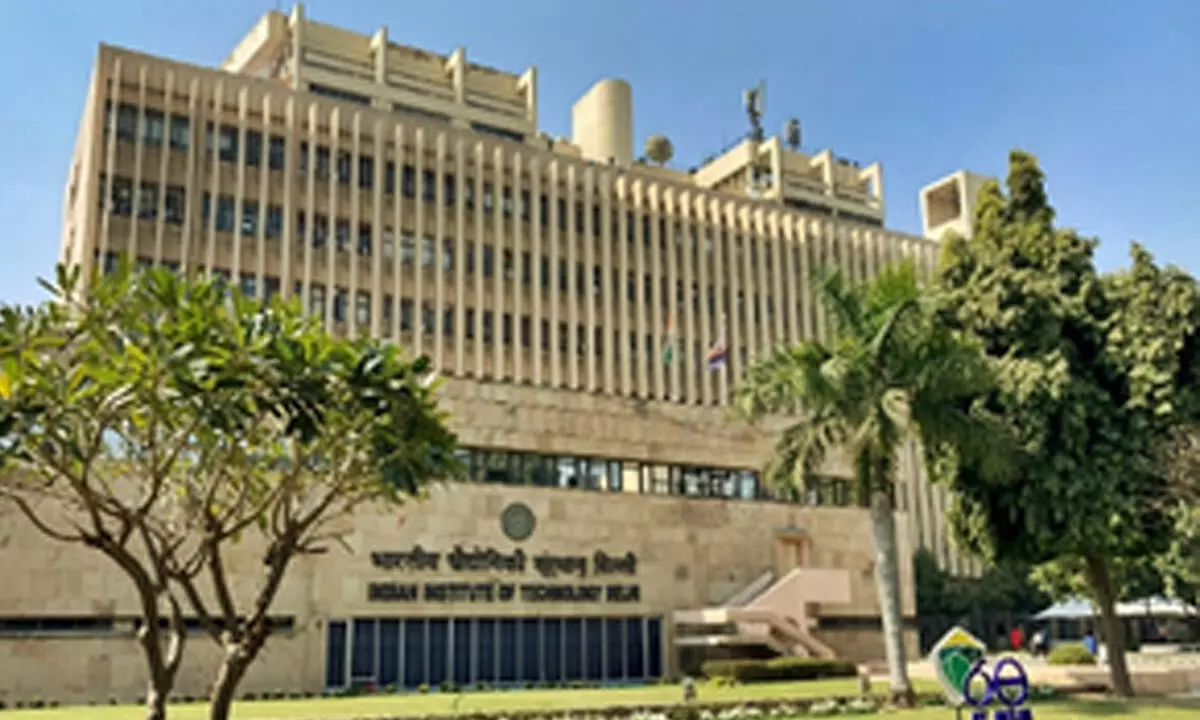Live
- Hyderabad: City-based Karaoke group feted by Rafi family
- Rachakonda sees uptick in murders, kidnappings; overall crime rate rises
- Hyderabad: Police bust drug racket, three land behind bars
- HC extends Sengar’s interim bail till Jan 20
- Foundation stone laid for drinking water pipeline
- Hyderabad: Fake tea powder unit busted, stocks worth Rs 1.2L seized
- Mastermind of kidnapping gang targeting celebrities arrested
- Khanapur: Temples celebrate their anniversaries grandly
- Ensure 100% enrolment of women into SHGs, urges Collector
- Resolve Prajavani petitions quickly: DC Venkatesh Dotre
Just In

Researchers at IIT Delhi have demonstrated one such technique on a commercially available polymeric material called Cyclic Transparent Optical Polymer (CYTOP), which may open new ways of developing advanced electronic devices for inherent data storage and encryption.
New Delhi: Researchers at IIT Delhi have demonstrated one such technique on a commercially available polymeric material called Cyclic Transparent Optical Polymer (CYTOP), which may open new ways of developing advanced electronic devices for inherent data storage and encryption.
According to IIT Delhi, the proposed technique is versatile and can be used on various materials, opening up scope in a wide range of applications, including renewable energy generation from rainwater, chemical sensing for water quality monitoring, etc.
Researchers at IIT said that data encryption and protection are crucial in today's communication systems.
The challenge is only going to be compounded with the advancement of Internet of Things and Artificial Intelligence technologies, which either produce large volumes of data continuously or depend on the data for their efficient functionality. Thus, it has become imperative to develop newer mechanisms that can facilitate the exchange of classified information in a secure way.
A study titled "Determination of surface charge density and charge mapping of CYTOP thin film in air using Electrostatic Force Microscopy," carried out by research scholar Shalini Singh.
Shalini is from the School of Interdisciplinary Research at IIT Delhi.
She carried out the research in collaboration with Max Plank Institute of Polymer Research and University of Stuttgart, Germany.
The study revealed that CYTOP can hold the inserted charges for a long duration, which is not generally possible with other materials.
This property of CYTOP can be utilised to write the information at nanoscale in the form of charges, which can further be read by Electrostatic Force Microscopy (EFM) only.
"The present investigation would allow us to write anything on an electret substrate (material that can store charge indefinitely) by using a suitable charge injection mechanism and can only be retrieved under a specialised instrument using a particular protocol. The written string would not be visible even in optical or electron microscope. The longevity of the written charge is dependent on the quality of the electret we are using. CYTOP has shown significant promises in that front, which can retain charges for more than 100 years," said Dhiman Mallick, Department of Electrical Engineering, IIT Delhi.
"In the current study, the Atomic Force Microscope's EFM mode was used to write and read the charges by microcantilever probe on CYTOP. Although this is a very initial step of charge writing capability at nanoscale on an electret but can be extended to the macroscale using motorised stage and probe, like lithographic patterning, which could be end-to-end encrypted," said Ankur Goswami, Department of Materials Science and Engineering, IIT Delhi.
Shalini Singh added, "This study may give a direction towards the application for ultra-high sensitive sensors and data storage for the memory devices."

© 2024 Hyderabad Media House Limited/The Hans India. All rights reserved. Powered by hocalwire.com







